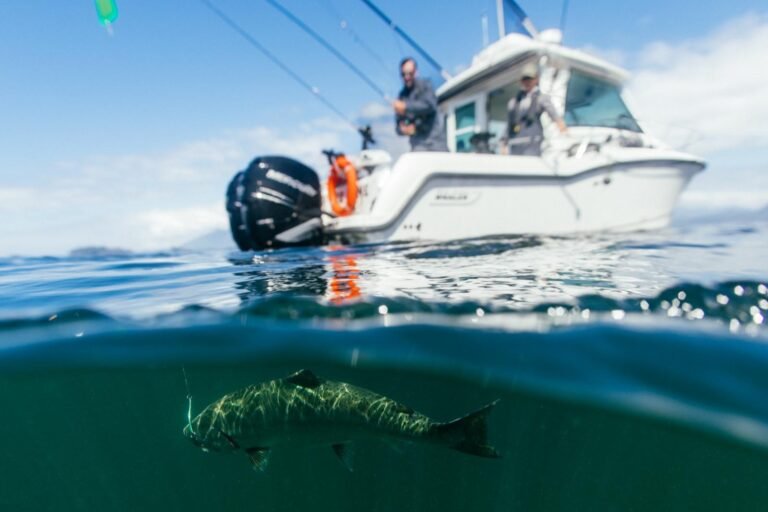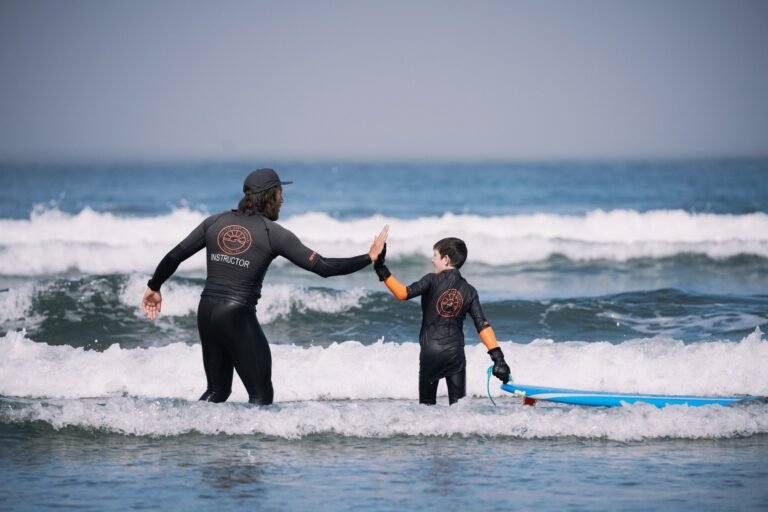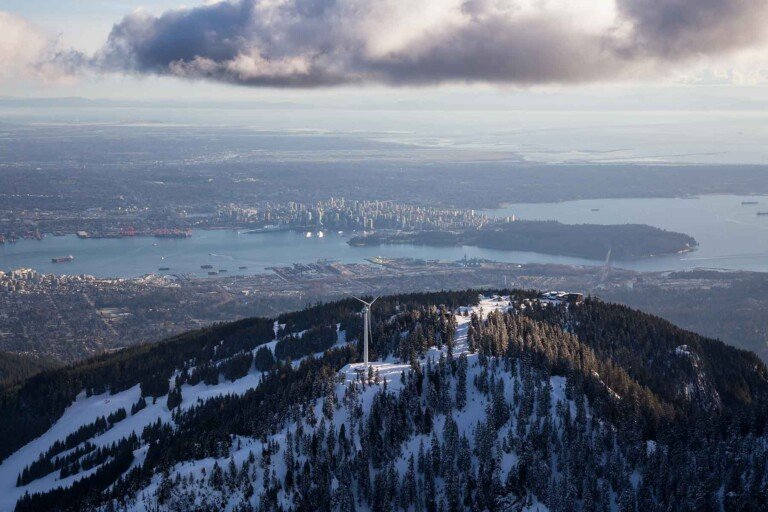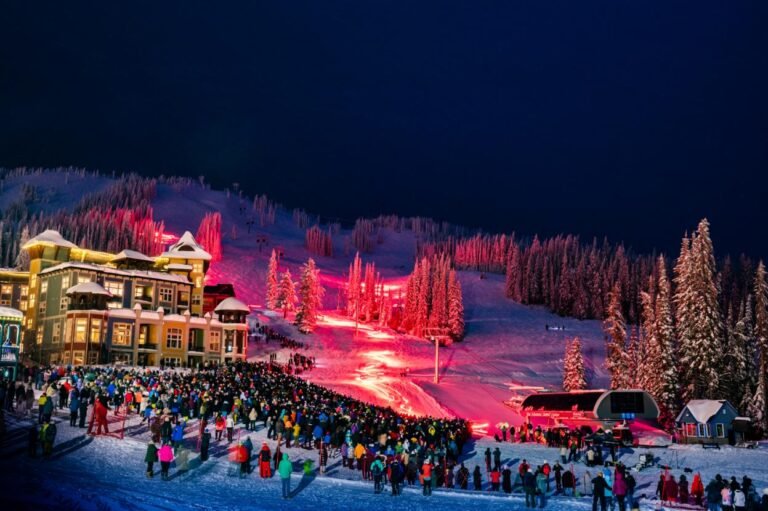Premier Listings: Mountain Biking: Whistler, Sea to Sky Highway
Thousands of visitors flock to what is fast becoming a North American mountain biking mecca: the Squamish and Whistler corridor. Piggybacking on the ever present forest industry, mountain bikers from Squamish to Pemberton have gone deeper into the wood to build an enviable array of mountain biking trails in pursuit of even gnarlier single track terrain and the satisfaction only remoteness and exertion can create. The mountain biking in Sea to Sky country is second to none and runs the gamut of difficulty from valley bottom trails to breath stealing uphills, and technical single track descents.
One of the biggest developments in mountain biking recently in Whistler has been the opening of the Whistler Mountain Bike Park. Located below the Olympic Station on the north side of the mountain and accessible from Whistler Village by the Whistler Mountain gondola, the self-guided single- and double-track trails provide for all ability levels.
Trails
Whistler Bike Park has over 200km of lift-serviced gravity fed, adrenaline fueled descending trails. Something for every level of rider. Gentle, banked cruisers through the Coastal forest. Tight and twisty single track – perfect for intermediate riders. For the armour clad, full face wearing, 50lb. bike group there are steep rock faces, gnarly, root strewn lines, drop offs of all descriptions and more.
Skills Centres
The green skills centre is built close to the ground for riders just learning to clear obstacles and ride planks.
The blue zone increases the difficulty by raising, narrowing and tightening all of the constructed elements.
The double black skills centre is for expert riders only including a dazzling display of North Shore-style obstacles.
BikerCross Course
Take it fast, take it slow. Huge banked corners, rhythm sections, table tops, doubles – the closest thing to flying on two wheels.
If you don’t have your own bicycle, you can rent one at the Whistler Activity Centre. Transport yourself to the bike park on board the Fitzsimmons Express chairlift (the bikes are loaded onto racks on each chair) and enter the park at 800 metres above Whistler Village. A “skills centre” near the chairlift presents riders with practice puzzles such as a teeter totter and narrow wooden ramps resembling logs. It is a good place to test your bicycle balance senses.
It is possible to ride the blue or green trails and still see the black diamond bike trail action. Long table-top jumps launch riders into the air while others drop off a high platform onto a steep, sloping run-off hill. The black diamond cross trail emerges from the trees on the lower slopes of the park and enters an open section that resembles a luge track. Its walled corners – berms – promote a speedy descent, and it is spectacular to watch the good riders run the course from the vantage point of the hillside. Guided descents of the mountain are also available.
Some of the best single-track mountain-bike trails in the Whistler region are found at the south end of the resort in the Whistler Interpretive Forest. The trailhead is located at the beginning of the Cheakamus Lake Road on the east side of Hwy 99, directly across from the entrance to Whistler’s Function Junction industrial park. The over 7.5 miles (12 km) of well-constructed trails in the interpretive forest lead along both sides of the Cheakamus River and onto the ridges at higher elevations around Loggers Lake. Maps are available from a dispenser at the trailhead; just reach underneath to get one. Most trails are suited to intermediate-level riders.
You can ride a mountain bike on the trail that leads to Cheakamus Lake in Garibaldi Provincial Park. This is one of only two places in the massive park where cycling is allowed, Diamond Head being the other. Follow the Cheakamus Lake Road, which begins 6 miles (10 km) south of Whistler Village, east from Hwy 99. The road runs uphill for most of the way to the park boundary, a distance of 3.7 miles (6 km), from where a rock-and-rolling trail leads 2 miles (3.5 km) through old-growth forest to Cheakamus Lake. This is a good trail for beginners.
Mountain biking may trace its origins to the 1970s in northern California, but it didn’t take long to make its way to Whistler. By the early 1980s, North America’s longest point-to-point mountain-bike race, the Cheakamus Challenge (about 30 miles/50 km, from Brackendale to Whistler), was already underway. Held on the last weekend in September, the race attracts a thousand riders, from elite pros to ordinary Janes and Joes, who take anywhere from 2 to 5 hours to complete the course. Much of the distance covers the same route as the Sea to Sky Mountain Biking and Hiking Trail that runs between Squamish and D’Arcy, a distance of 93 miles (150 km) by road. When complete, it’s expected that the Sea to Sky trail will cover twice that distance as more use is made of off-road trails, deactivated logging roads, and BC Hydro access roads.
Alice Lake Provincial Park is almost as much a favourite with mountain-bike riders as the Stawamus Chief is with climbers. Because it seldom occurs, mountain bikers get a warm feeling when invited to ride trails in public parks. It is hoped that this helps foster a better rapport between cyclists and those on foot. This is the scenario at Alice Lake Provincial Park north of Squamish.
Although not large when compared to neighbouring Garibaldi Provincial Park, at 980 acres (397 hectares) Alice Lake is just the right size for a rock-and-rolling 7.4-mile (12-km) trail that everyone can enjoy 10 months of the year. In July and August, campers take precedence in the park, and the Four Lakes Loop Trail is closed to mountain bikers. It’s cool. Everyone understands. Time to play elsewhere.
Trying to keep up with the rapid pace of mountain-bike trail building in the Sea to Sky corridor is enough to drive any cyclists to distraction, but pleasantly so. Some of the best new single-track trails are being built by the Ministry of Forests at their Brohm Lake Interpretive Forest beside Hwy 99, 2.5 miles (4 km) north of Alice Lake Provincial Park, near Squamish. Trail maps are available from the prominent information kiosk at the entrance to the site. An extensive network of new trails, some of which are still not complete, cuts through the forest to the south and west of Brohm Lake. The best approach to the mountain-biking trails is at a gated entrance about 0.6 mile (1 km) south of the lake’s main paved parking area. There’s plenty of room to pull off Hwy 99 here, and the trailhead is marked with a large, brown Forest Service sign, beside which is the covered box filled with trail maps. The sounds of the highway quickly fade away as you begin riding. At several places the 7 miles (11 km) of connecting trails divide, offering a choice of directions to cliffside viewpoints. At present, the trails around Brohm Lake itself are unsuitable for mountain bikes. Keep your eye out for improvements as the Forest Service continues work on the site.
The Paradise Valley Road connects with a section of the Pemberton Trail, one of the oldest trails in the Lower Mainland. This trading route linked Native communities on the coast with the Thompson Plateau in the Central Interior. It was along this route that the first Europeans were guided, beginning with fur traders and later with adventurers in search of good fishing in the Alta Lakes region. Parts of the old trail are still faintly visible on the hillside above the North Vancouver Outdoors School, located 1.2 miles (2 km) north from the Cheekye Bridge on the Paradise Valley Road. Today, mountain-bikers follow the intermediate-level route beginning from the bridge through Paradise Valley.
To find it, watch for the signs to Paradise Valley on Hwy 99 opposite the entrance to Alice Lake Provincial Park. Travel 2.5 miles (4 km) west of Hwy 99 on the Squamish Valley Road to the Cheekye Bridge. The Paradise Valley Rd branches off the Squamish Valley Road here and runs for 7 miles (11 km) through Paradise Valley. The road is paved for the first 3 miles (5 km) and parallels the Cheakamus River for much of the way. A 3-mile (5-km) section of the Pemberton Trail begins at the north end of Paradise Valley Road and leads to Hwy 99.
At first it ascends along a rocky service road to the BC Rail tracks. This is a difficult section to ride clean; don’t be surprised if you have a short hike with your bike over the roughest sections. Beyond the railway tracks the trail smooths out as it makes a gradual ascent above the Cheakamus Canyon, passes Starvation Lake, and finally links with Hwy 99 near the north end of the canyon. Turn back here and enjoy the descent, along with views of the Tantalus Range on the western skyline.
There aren’t many trails in Garibaldi Provincial Park where mountain bikes are allowed, but one of the best is the 7-mile (11-km) trail to Elfin Lakes in the Diamond Head region of the park. Plan on taking several hours to ascend the old service road, then enjoy a thrilling though not technically challenging descent.
Mountain bikers of all ages and abilities can test their mettle at the Squamish Test of Metal, regarded as one of the premiere cross-country mountain bikes races in North America. The race is held on the world-renowned singletrack trails and roads of Squamish in mid June, starting at Brennan Park Leisure Centre.
The Test of Metal course is a very demanding 67-kilometre course with more than 1,200 metres of climbing and 35 kilometres of singletrack. The estimated time to complete the race will be just under 3 hours for the fastest riders, and between 4 and 5 hours for the majority of competitors. The stars of the tomorrow race on a short course specially designed for kids. All abilities are welcome – from tricycles to training wheels to budding mountain bike racers.
The Test of Metal evolved into the Squamish Mountain Bike Festival. From the excitement and costumes of the head-to-head chariot races on the streets of Squamish, to the cow bell-ringing crowds gathered in Garibaldi Highlands, to the thrills provided in the trials competition by some of the most acrobatic bikers in the world, the Squamish Mountain Bike Festival provides a weekend of great entertainment and fun for the entire family. Visit www.testofmetal.com for more information.
One of the longer off-road routes runs along the east side of Green Lake and passes through the ghost-town of Parkhurst, once a thriving logging community in the 1940s and 1950s. This 14-mile (23-km) return journey follows a BC Hydro access road north from the Valley Trail, where Fitzsimmons Creek enters Green Lake. Instead of following the Valley Trail down to Green Lake, take the rugged road that leads north beside the hydro towers. Instead of riding this section ‘clean,’ you may have to push your bike until you reach the crest of the slope. From here north is the most enjoyable section. As the access road nears the lake’s north end, watch for a side road that leads to Parkhurst, the only such side road you’ll encounter on this ride. The access road eventually crosses the BC Rail line near the approach to Wedgemount Lake on the east side of Hwy 99. You can either retrace your tread marks or loop back to Whistler on Hwy 99.
Just north of Whistler is the route to Cougar Mountain and Soo River. The road to Cougar Mountain begins at the north end of Green Lake, 0.6 mile (1 km) past the entrance to Whistler’s Emerald Estates neighbourhood. Take the two-lane gravel road that rises uphill on the left (west) side of Hwy 99. A short way in you pass a brown Forest Service sign marking the beginning of the road along 16-Mile Creek. From here the road and then an enchanting section of single-track trail lead explorers on a 12-mile (20-km) jaunt through clear-cut fields choked with blueberry bushes to the Showh Lakes, and from there to a grove of old-growth cedars near the summit of Cougar Mountain on the Ancient Cedars Loop Trail. For an extended mountain-bike tour of the base of Cougar Mountain, follow the Soo River Forest Road. Stay to the left when the road forks around the Showh Lakes rather than follow the well-marked road uphill to the Ancient Cedars Loop Trail. Beyond here the road becomes rougher as it heads north towards the Soo River Forest Road, which loops east to Hwy 99.
North of Pemberton the Sea to Sky Trail has received some of the most concentrated attention, as trail builders fine-tune the route between Mount Currie and D’Arcy. At present, a 31-mile (50-km) loop runs between D’Arcy (the trail’s northern terminus) and the whistle stop of Gramsons on the BC Rail line south of Birkenhead Lake. Quite a variety of terrain is up for grabs along the way. Decide which section best suits your skill level. For beginners, the 4.3-mile (7-km) trail that leads around Birkenhead Lake is a good route on which to practise. Much of it is level as it follows an old fire road along the west side of the lake. Only one section is so steep that you’ll need to dismount.
A more challenging section lies between Birkenhead Lake and D’Arcy, particularly the steep descent on Smell the Fear, a short but technically demanding piece of singletrack. For those who wish a gentler approach, a power-line road is an alternative. The Sea to Sky trail is well marked along this route, which passes beside the Forest Service recreation site at Blackwater Lake near the halfway point between Birkenhead Lake and D’Arcy. A 6-mile (10-km) intermediate-level section of trail runs between the south end of Birkenhead Lake and Gramsons. At Gramsons you can either retrace the route or follow the D’Arcy-Anderson Lake Road north to where you began.
Aside from the Sea to Sky Trail, the heart of mountain biking in the Pemberton region is centred around Mosquito Lake and Ivey Lake. The two lakes are tucked in behind a knoll on the north side of the valley between Pemberton and Mount Currie. A dozen or more trails wind in and out of each other; principal among them are the Mosquito Lake Trail, Ridge Loop Trail, and Lake Loop Trail. Although much of the fun is concentrated around Mosquito Lake (where a Forest Service recreation site is located) and on the east side of Ivey Lake Rd, the most challenging trails – Psychopath, Indy 500, and Blood, Sweat, and Fear – run along the west side of the BC Hydro power-line grid.
More placid rides include the River Trail, which follows a dike along the east side of the Lillooet River for a considerable distance. Easiest access to the trails is from Hwy 99 between Pemberton and Mount Currie, just east of the Lillooet River Bridge. The River Trail begins beside the bridge. To reach the majority of the trails, turn north off Hwy 99 at the first road east of the bridge, beside an impressively landscaped log home. Follow this road as it crosses the BC Rail tracks and then begins climbing the knoll. Watch for trails as you ascend Ivey Lake Road. There are usually other mountain bikers on the road to question about routes.
An alternative approach to Mosquito Lake is on the west side of D’Arcy-Anderson Lake Road, just north of Mount Currie. It’s a 1.2-mile (2-km) ride from here on a gravel access road to the Forest Service recreation site. Massive Mount Currie dominates the landscape, and the views from the knoll are sublime. Equally absorbing are the clouds of mosquitoes for which the valley is renowned, particularly in late spring and early summer.
One of the most extensive network of trails in the Lillooet region is the more than 100 miles (162 km) of routes in the South Chilcotin Mountains around Spruce Lake, which are also utilized by hikers and horseback riders. The weather around Lillooet is much drier and hotter than elsewhere in the Sea to Sky region, so be prepared to consume a lot of liquid as you pedal along the trails.
Premier Listings

Biographical Info
FarOut Wilderness is an outdoor adventure travel company specializing in overland vehicle rentals and tailor-made itineraries in British Columbia. We use our local knowledge and experience to transform your ideas into an authentic and unique adventure.
Our self-drive itineraries allow you to explore off the beaten track at your own pace. We provide you with the resources to re-connect with nature and most importantly each another. All of our vehicles are fully insured for driving on unpaved roads and are equipped with a rooftop tent, camping equipment and GPS Messenger service.
FarOut Wilderness operates in all seasons and has one pet friendly vehicle. We offer complimentary vehicle collection and drop off at the following locations: Swartz Bay Ferry Terminal, Victoria Airport, Victoria Downtown, Tsawwassen Ferry Terminal, Vancouver Downtown, and Vancouver Airport. If you have another collection or drop off location in mind, please contact us!






